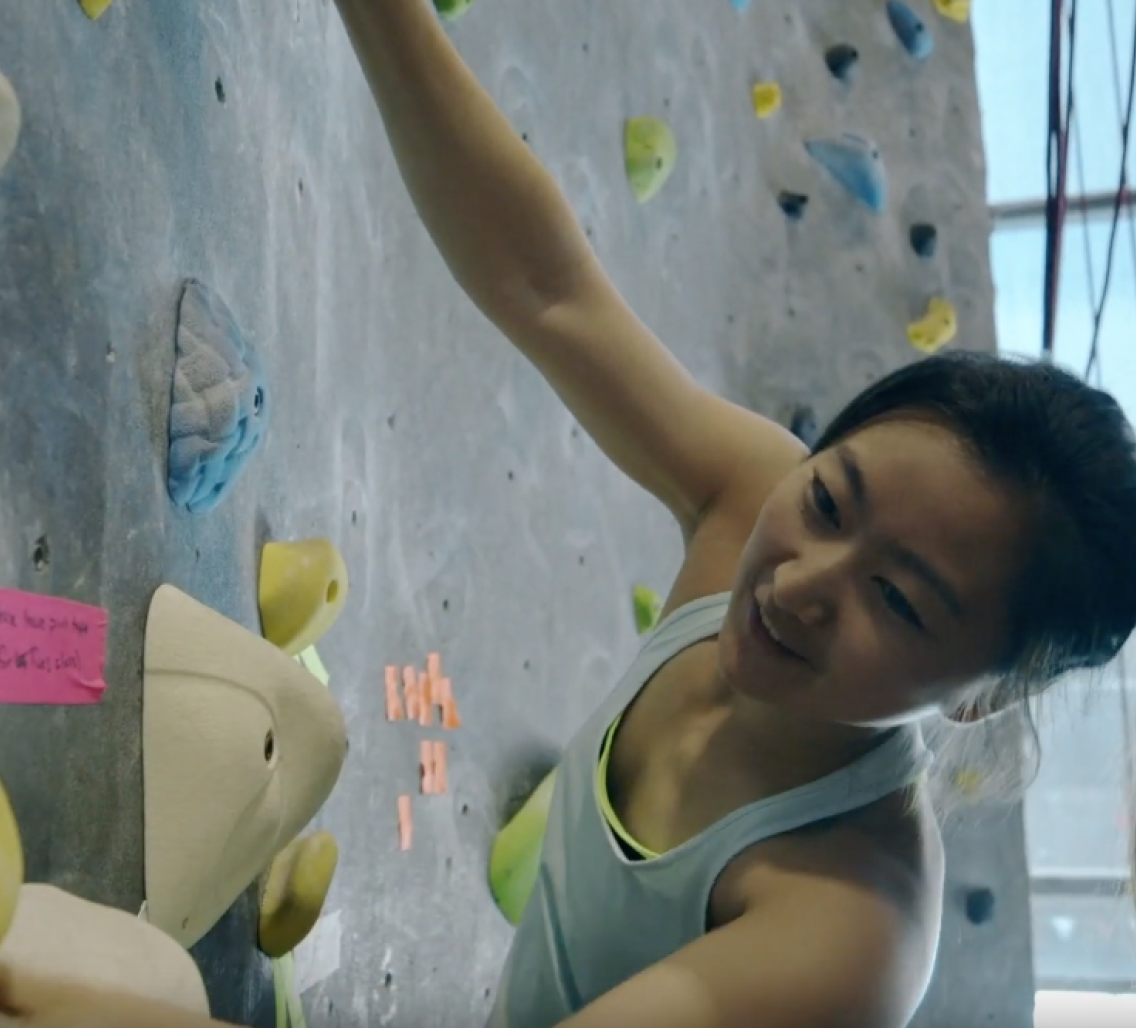By Nathan Collins
One by one, the students inched toward the edge, steeled themselves for what they were about to do, then stepped into empty space. As a rope caught them and they swung out into the air in the Arrillaga Outdoor Education and Recreation Center’s climbing gym, their instructors hoped to impart a dramatic lesson: that fear and other emotions can impede or even shut down completely the systems in our brains responsible for movement.
Graduate students Daniel Birman and Corey Fernandez taught Vertical Neuroscience, a course that teaches students about neuroscience through the lens of rock climbing.
Video by Kurt Hickman
To Daniel Birman, a graduate student in psychology, and Corey Fernandez, a graduate student in the School of Medicine’s Neuroscience Ph.D. Program, the lesson seemed to be going well, as was their class, Vertical Neuroscience: How the Brain Enables Climbing, a summer session course that aimed to teach students about the brain through the lens of rock climbing.
“All of the things that we want people to think about in modern neuroscience, like the connections between the brain and the muscles, the way that fear and pain and different experiences change how those things work, those are all related to rock climbing in some way,” Birman said. “So it’s a nice way to frame a neuroscience class.”
The course was born out of the pair’s shared interests, Fernandez said. “Dan and I are both climbers and we’re both neuroscientists,” she said. “We met when I started here at Stanford, and we really wanted to teach a summer class that united our two passions, climbing and science, and we thought this would be a great way to do it.”
The brain in practice
Birman, a graduate trainee in the Wu Tsai Neurosciences Institute’s Mind, Brain, Computation and Technology training program, and Fernandez broke Vertical Neuroscience into two parts. Twice a week, students met in a classroom to learn about what parts of the brain are responsible for planning and executing movements and how those components work together by transmitting electrical signals back and forth. To demonstrate the latter point, and to show how easy it can be to manipulate brain function, Birman sent electromagnetic pulses through Fernandez’s motor cortex – the part of the brain that sends signals to muscles instructing them to move – which in turn forced small movements in her body.
The rest of the time, students trekked to the climbing gym, where they learned rock climbing basics and, in more visceral fashion, how the brain plans movements and learns new motor skills. Students first learned essential knots and the basics of climbing safety, then practiced rock climbing moves and a rope technique called belaying, which allows someone to stop a climber’s fall if they lose their grip. Using video motion-tracking software, Birman and Fernandez also showed students how their belaying technique went from slightly haphazard to more smooth and regular motions over time.
“It’s a really great way to see the principles that we’re talking about illustrated in real life in real time,” Fernandez said. “So when we’re discussing how with practice you can improve coordination and other aspects of motor skill learning, we can work in the gym and be doing that in real time and seeing that happen in ourselves. It’s really great to be able to tie in sort of the neural processes that allow us to develop these types of skills.”
Higher awareness
Joyce He, a student in the Graduate School of Education, said she had taken neuroscience courses before and has been rock climbing for about a year. Like her instructors, she was excited by the opportunity to bring the two interests together.
“When I was learning neuroscience in college, we weren’t applying what we learned to our understanding of how things work in the real world. It’s really nice to be in the gym and apply what we learn in class, and then in class discuss what we did in the gym and see how that fits in with what we’re learning that week,” He said. The week she and her fellow students jumped off the ledge, she pointed out, the class was studying fear.
After taking the class, He said she had also come to a greater appreciation of what was going inside her mind as she climbed and in other areas of her life as well. “I think the biggest thing for me is the mindset change,” He said. “I think I’ll be more willing and more motivated to put my knowledge about neuroscience into other things I do, not just climbing.”
To read all stories about Stanford science, subscribe to the biweekly Stanford Science Digest.
Media Contacts
Nathan Collins, Stanford News Service: (650) 228-4677, nac@stanford.edu
